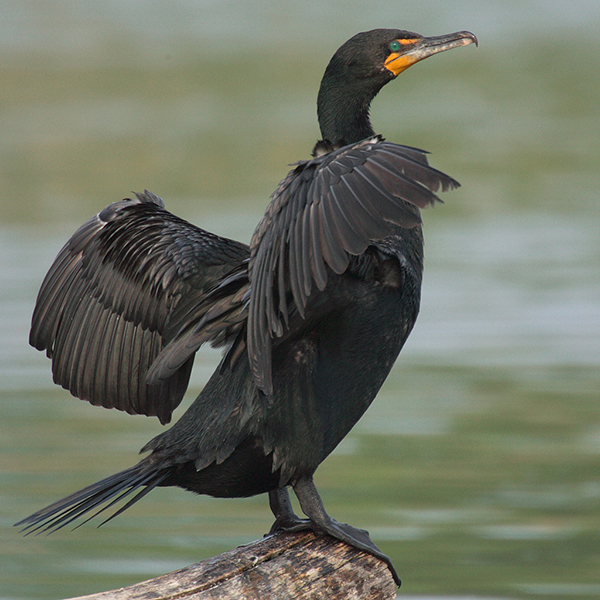From Sportfishing
Fish Report for 3-27-2018

Cormorant harassment aims to protect young fish
3-27-2018
ODFW
Harassment, or “hazing”, of double-crested cormorants is set to begin soon in several areas along the Oregon Coast in an effort to improve survival of juvenile salmon.
Double-crested cormorants are fish-eating waterbirds that occur throughout the state. The species is an Oregon native, and is particularly prevalent on the state’s estuaries during April through October. Research indicates cormorants can consume significant numbers of juvenile salmon during this time period.
To reduce the threat to young fish, the Oregon Department of Fish and Wildlife (ODFW) is working with several nonprofit and local governmental organizations to haze cormorants on six coastal estuaries over the next two to four months.
Hazing will involve driving the birds from locations where juvenile salmon are seasonally concentrated, toward areas where non-salmon fish species are more abundant. Workers will use boats and on some estuaries, small pyrotechnics, to accomplish the task.
Hazing is intended to increase the survival of both wild-spawned and hatchery salmon juveniles as they migrate to the ocean. Some of these spring migrants represent species that are experiencing conditions of conservation risk, including coho salmon, which is federally threatened in Oregon under the Endangered Species Act.
Hazing workers are being provided by the Clatsop County Fisheries Project, Port of Nehalem, Port of Bandon, North Coast Salmon and Steelhead Enhancement Fund, and Alsea Sportsmen’s Association. ODFW will provide a portion of the funding and program oversight, and may conduct some hazing operations itself to protect hatchery releases on the lower Columbia River and other locations.
ODFW has coordinated the cormorant hazing project for the last 9 years, although cormorant hazing in some form has occurred at some Oregon estuaries intermittently since 1988.
Hazing will continue through May 31 on the Nehalem, Nestucca, and Coquille river estuaries, and on Tillamook and Alsea bays. The program will continue through at least July 31 on the lower Columbia River, where hazing will occur at a variety of locations, including Young’s Bay, Blind Slough, and Tongue Point.
< Previous Report Next Report >
More Reports
OR Department of Fish & Wildlife Reports
for Friday, March 23rd, 2018• Gold Beach volunteer opportunity to restore meadow for wildlife habitat
OR Department of Fish & Wildlife Reports
for Thursday, March 22nd, 2018• ODFW hosts series of meetings for public input on 2019-21 budget

Website Hosting and Design provided by TECK.net